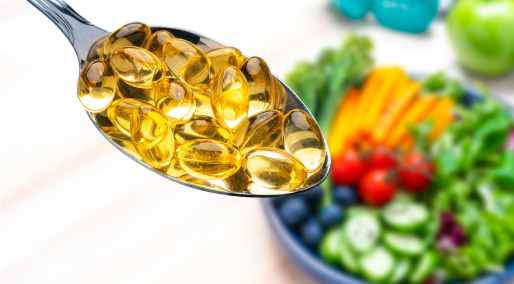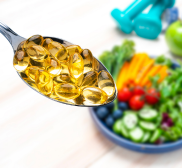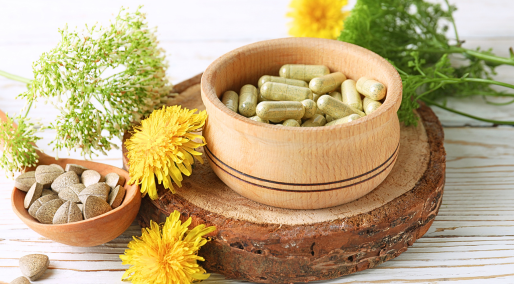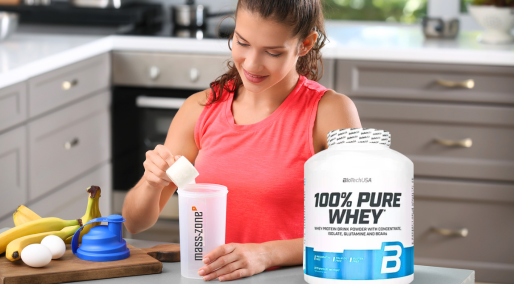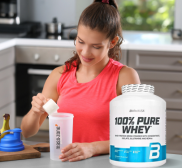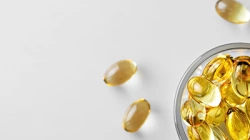.webp)
.webp)

Patryk Chodyniecki
Patryk Chodyniecki
Patryk Chodyniecki
Date Added: 04-08-2023
Muscle catabolism after training - how to protect your muscles from catabolism
Valuable workouts are the key to health and fitness. But what do we do to protect our muscles from catabolism after exercise? What is catabolism? What is anabolism? In this article we describe what muscle catabolism is, how to control this process, what catabolic processes take place in the body and what metabolic balance is. We will also introduce you to ways of dealing with this muscle catabolism, including proper diet, supplementation, exercise, as well as other effective methods.
Contents
- What is muscle catabolism?
- Anabolism and catabolism - basic differences.
- What catabolic processes take place in the body?
- In practice, we can distinguish the following catabolic processes
- Muscle catabolism - why is it undesirable?
- Muscle weakness
- Loss of muscle mass
- Decreased aerobic and anaerobic capacity
- What is overnight catabolism?
- What are the symptoms of muscle catabolism?
- Decline in muscle mass
- Decrease in muscle strength
- Perceived muscle soreness
- Low energy
- Lack of progress
- How do you protect your muscles from catabolism?
- What influences muscle catabolism?
- How do you protect your muscles from catabolism?
- Adequate hydration
- Protein intake
- Carbohydrate consumptionCarbohydrates are a source of energy for the body, and consuming the right amount of carbohydrates can help with muscle recovery. After an intense workout, our muscles need around 50-100 grams of carbohydrates in order to recover and avoid muscle catabolism.
- Supplementation
- Appropriate exercise
- A balanced diet
- What foods are good for muscle catabolism?
- Carbohydrates for muscle catabolism
- Fats for catabolism
- What vitamins and minerals to consume for muscle catabolism?
- What exercises help with catabolism?
- Muscle massage roller
- Physical activity
- Can muscle catabolism be inhibited?
Valuable workouts are the key to health and fitness. But what do we do to protect our muscles from catabolism after exercise? What is catabolism? What is anabolism? In this article we describe what muscle catabolism is, how to control this process, what catabolic processes take place in the body and what metabolic balance is. We will also introduce you to ways of dealing with this muscle catabolism, including proper diet, supplementation, exercise, as well as other effective methods.
What is muscle catabolism?
Catabolism is a process in the body that involves the breakdown of chemical compounds into simpler components. The purpose of this is to obtain the energy necessary for the body to function and for tissue regeneration. This process occurs naturally in the human body and plays an important role in metabolism. It is particularly important during physical exertion, when the body needs energy to work its muscles. However, it can also lead to undesirable effects such as loss of muscle mass - especially if appropriate precautions are not taken. This is because catabolism is a process in which the body breaks down its own substances for energy or building blocks. In this case, it can occur as a result of the action of certain hormones such as:
- adrenaline,
- cortisol,
- glucagon,
- cytokines - or peptide hormone-like substances.
The above hormones are usually activated in stressful situations.
Anabolism and catabolism - basic differences.
There are continuous metabolic processes in the human body, including catabolic processes. Anabolism, on the other hand, are processes where the body creates new substances, such as proteins, from smaller components. It is this process that will be of most interest to those who are thinking of intensively increasing muscle mass building. Let us not forget that the above processes that take place in our body favour body building.
Anabolism and catabolism are more interrelated than you might think. Anabolism is a building process, while catabolism is a breaking down process. There is a balance between the two in the body. This is what is known as metabolic balance.
In practice, it works in such a way that:
- in the anabolic process - the body builds new proteins and muscle tissue,
- in a catabolic process - the body breaks down muscle proteins for energy.
What catabolic processes take place in the body?
Muscle is made up of:
- proteins,
- amino acids,
- other nutrients - used to build muscle and maintain it.
Muscle catabolism occurs when the body uses muscle as an energy source instead of burning fat or carbohydrates. This can occur when the body does not receive an adequate dose of nutrients or during excessive exercise.
In practice, we can distinguish the following catabolic processes:
- Gluconeogenesis - the process by which the body converts muscle proteins into glucose for energy.
- Glycogenolysis - is the stage when the body breaks down glycogen (the form of glucose stored in muscles) into glucose and uses it as an energy source.
- Lipolysis - is when the body breaks down fats into fatty acids and glycerol, which can be used as an energy source. Unfortunately, with extreme exercise, when the body needs energy quickly, the body can start to use muscle as an energy source.
When the body uses muscle as an energy source, muscle catabolism occurs. In this state, the body starts to break down muscle tissue into amino acids and uses them as an energy source. As a result, the muscles start to shrink and their strength and endurance decrease. To avoid this, it is important to provide the body with an adequate supply of protein and other nutrients to support anabolic processes and protect muscles from catabolism.
Muscle catabolism - why is it undesirable?
Muscle catabolism is the process whereby muscles start to break down instead of growing. It is an undesirable phenomenon, especially for people who want to increase their muscle mass or improve their athletic performance. In certain situations, catabolic processes can escalate into more intense ones. One such case is overly intense physical training.
Muscle weakness
One of the most serious effects of muscle catabolism is muscle weakness. When muscle cells break down, their ability to generate force disappears. As a result, a person feels that their muscles are weaker and less robust. This in turn affects the effectiveness of training and leads to less athletic performance.
Loss of muscle mass
Muscle catabolism leads to a loss of muscle mass. This process reduces muscle protein levels, which are essential for building and repairing muscle. The reduction in muscle mass has a negative impact on body appearance and the body's ability to process fat and carbohydrates. As a result, the person loses the ability to maintain a healthy weight and metabolic efficiency. It also has the effect of decreasing muscle recovery after training, and as we well know - such an element is essential for regular workouts. The right amount of muscle tissue, also means the ability to be more plastic, which is conducive to performing high-load training.
Decreased aerobic and anaerobic capacity
Unfortunately, it is well known that catabolism increases the risk of loss of anaerobic endurance. When the body loses muscle, the ability to take in oxygen and consume energy also decreases, which affects training efficiency. In practice, this means that people training during muscle catabolism will simply feel worse after training and their performance will be lower.
What is overnight catabolism?
During night-time rest, so-called nocturnal catabolism takes place, which is a natural process necessary for muscle regeneration (during this time, amino acids are released from the muscles). Too little sleep can severely hamper muscle mass gain. It is therefore important to ensure adequate protein before going to bed. The term nocturnal catabolism refers to a situation where the body is unable to provide itself with energy through food. Therefore, an effective solution is to consume meals in the evening that are slowly digested and absorbed. Proteins that are typically created for the night are a good solution in this case - as they take many hours to be released.
What are the symptoms of muscle catabolism?
It is useful to know the symptoms of catabolism so that it can be identified and effectively counteracted.
Decline in muscle mass
The most obvious symptom of muscle catabolism is loss of muscle mass. This can occur in a short period of time, even after a single workout.
Decrease in muscle strength
Loss of muscle strength is another symptom of muscle catabolism. People who experience this process notice that they find it increasingly difficult to perform exercises that previously did not pose much of a problem.
Perceived muscle soreness
Another symptom of muscle catabolism is perceived muscle soreness. After a workout, instead of feeling better, the body becomes stiffer and more sore.
Low energy
People who experience muscle catabolism often feel tired and lack energy. They may find it difficult to carry out daily activities and get back motivated to exercise.
Lack of progress
Unfortunately, this process leads to stagnation while building muscle mass. People who experience it notice a lack of progress in their training. Neither a change in training nor load helps.
How do you protect your muscles from catabolism?
If you have noticed any of the symptoms mentioned or simply want to avoid muscle catabolism after training, it is worth using the right strategies and supplementation. In the following sections of this article, we will describe which ingredients are worth consuming after training and which exercises to perform to minimise the risk of muscle catabolism.
What influences muscle catabolism?
First and foremost, an inadequate diet. Lack of an adequate supply of nutrients, especially protein, during exercise can lead to muscle catabolism. In addition:
- training too intensively without adequate recovery time,
- lack of sleep,
- stress,
- excessive physical activity can also contribute to catabolism.
It is also worth remembering that muscle catabolism is a natural process occurring in the body during exercise and it is not possible to inhibit it completely. However, by using the right nutritional and recovery strategies, its negative effects can be reduced and better exercise results can be achieved.
How do you protect your muscles from catabolism?
After every workout, our muscles are exposed to catabolism. This process leads to the breakdown of muscle tissue, which ultimately leads to a decrease in muscle mass. How can we protect our muscles from catabolism after training? First and foremost, remember to prevent the process of protein breakdown to protect your muscles. In this way, we will protect our developed physique, as well as the energy stored in them. Other aspects to take into account are outlined below.
Adequate hydration
Water is an extremely important ingredient to protect our muscles after training. During exercise, the body loses water and electrolytes, which affects the reduction of muscle mass. This is why it is so important that we replenish the fluids and minerals we have lost after training. For best results, it is a good idea to drink around 2-3 litres of water a day. It is also a good idea to drink water in the morning - to stimulate the metabolic process - and before bed (instead of sweetened drinks such as tea).Protein intake
Protein is a nutrient that is a key element in muscle recovery after training.Consuming the right amount of protein can provide the body with the right conditions to regenerate muscle tissues and prevent catabolism.It is advisable to provide the body with amino acids when eating, for example by consuming protein-rich meals or by using dietary supplements.Examples of such foods are beef, chicken, turkey, tuna and cheese.With these, you will not only take care of your recovery, but also maintain the correct quality of your body weight, as more protein also helps in the reduction process.
Carbohydrate consumptionCarbohydrates are a source of energy for the body, and consuming the right amount of carbohydrates can help with muscle recovery. After an intense workout, our muscles need around 50-100 grams of carbohydrates in order to recover and avoid muscle catabolism.
Supplementation
Supplementation can help protect muscles from catabolism after training.Many nutritional supplements, such as BCAAs, glutamine and creatine, can provide the body with the right nutrients to help with the recovery and rebuilding process.
Appropriate exercise
After your workout, it is worth taking the time to stretch and massage your muscles, which will help them to recover and therefore develop better.By using such methods, you can increase blood flow to the muscles, which will speed up the recovery process and help avoid catabolism.Another way to protect your muscles is to use rollers, which help to relax the muscles and reduce tension.
A balanced diet
Diet plays a key role in preventing muscle catabolism after training. An adequate supply of protein and other nutrients can help to provide the body with the right conditions for muscle recovery. It is recommended that the diet contains adequate amounts of:
- carbohydrates,proteinsfats,
- vitamins and minerals,This will certainly help to minimise the muscle catabolic process after training. Protecting your muscles from catabolism after a workout is key to getting better exercise results.
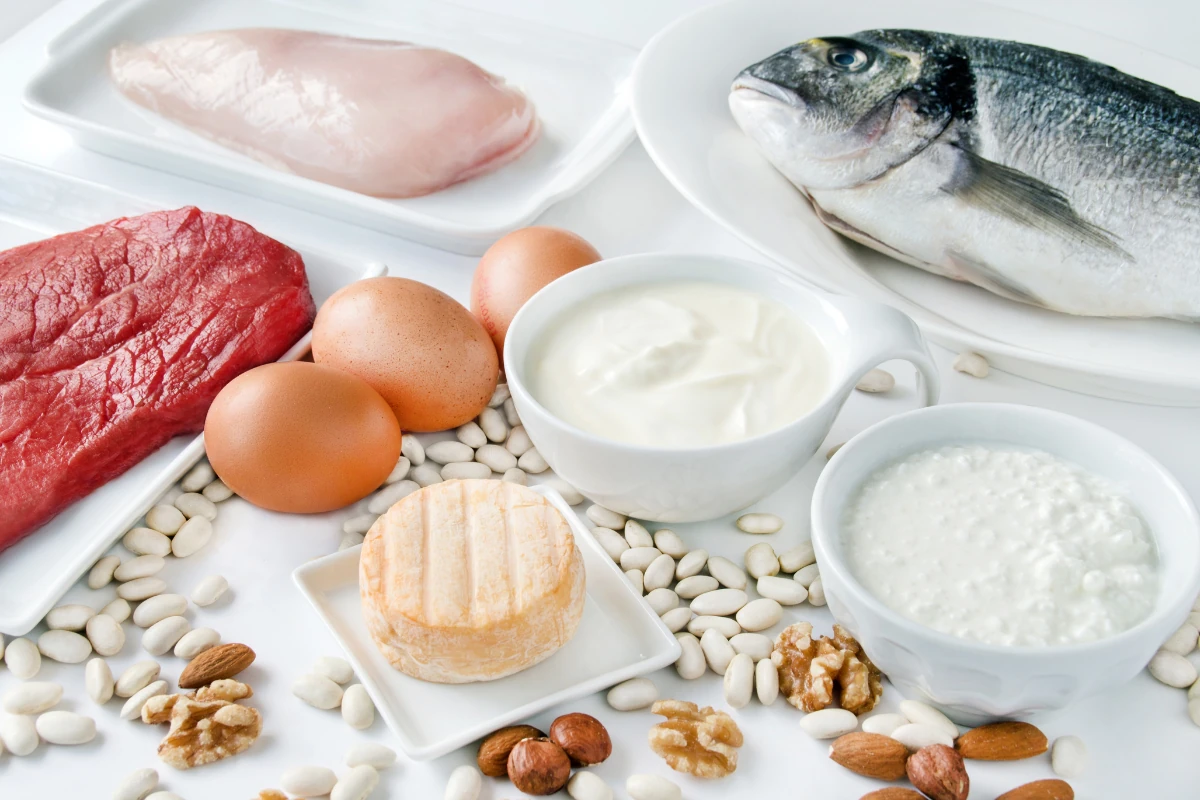
What foods are good for muscle catabolism?
After a workout, it is not only worthwhile but even necessary to replenish the nutrients that your body needs after intense exercise. In this way, you can reduce the risk of muscle catabolism and speed up body recovery. As we mentioned earlier - protein is the most important element in building muscle mass and promoting recovery. The most popular sources are:
- eggs,
- whey protein,
- meat,
- fish,
- nuts,
- tofu.
Carbohydrates for muscle catabolism
It is worth providing the body with carbohydrates as a source of energy during exercise. Interestingly - consuming carbohydrates also after a workout can help to replenish glycogen in the muscles. You will most often find them in:
- rice,
- poppy,
- yams,
- fruit,
- whole-grain bread.
Fats for catabolism
Remember to consume fats, which are also essential for the body. Choose healthy ones that contain monounsaturated and polyunsaturated fatty acids. They are the ones that help build and regenerate muscle tissue. In this case, it is worth reaching for:
- olive oil,
- avocado,
- nuts,
- fish,
- flaxseed.
What vitamins and minerals to consume for muscle catabolism?
Take care to provide vitamins and minerals that have a positive effect on metabolic processes. It is particularly worth consuming:
- vitamin C - you will find it in citrus fruits, parsley or sauerkraut,
- Vitamin E - in vegetable oils, avocados or eggs,
- Vitamin D - in fatty fish, whey protein or eggs,
- calcium - found in dairy products, broccoli or almonds,
- potassium - in coconut water, bananas or potatoes.
What exercises help with catabolism?
In addition to a proper diet, it is also worth paying attention to physical activity. Exercise and massage are great ways to reduce muscle damage and prevent catabolism.
Muscle massage roller
During training, muscles are subjected to intense exertion, which leads to increased muscle tension and tissue damage. Using a roller after training helps to reduce muscle tension and prevents catabolism. Without a doubt, the muscle massage roller is an ideal tool that leads to a reduction in tension and pain. Using a roller can also alleviate muscle spasms and improve blood supply to the muscles.
Physical activity
In addition to muscle massage, physical activity can also help to prevent catabolism. Aerobic exercises such as:jogging,cycling,help to keep muscles in good shape and improve their endurance.
Lifting weights, are also a great way to protect your muscles from catabolism. This is because they help to build muscle mass and increase strength.
Can muscle catabolism be inhibited?
Yes! This is great news, although the solution to catabolic problems is far from simple. Follow the steps below and you will certainly achieve your goal:
Eating the right amount of protein, carbohydrates and fats, and avoiding eating high-calorie processed foods is the key to preventing catabolism. Remember to also avoid foods that lower testosterone levels, such as alcohol.
It is also important to replenish electrolytes and minerals such as magnesium, potassium and sodium, which help with muscle recovery. During exercise, we lose a lot of valuable components with sweat, which need to be replenished in the right way. Supplementing with BCAAs, Creatine and Glutamine, can also help to prevent muscle catabolism.
Remember to get adequate rest and muscle recovery. Inadequate or insufficient rest can lead to a weakened body and catabolism. Make use of facilities such as massage, sauna or soaking your legs in ice.It is important to do stretching exercises and avoid a sedentary lifestyle, as this can cause blood circulation problems.Contrary to appearances, catabolism is not something irreversible.
Proper diet, supplementation, recovery and physical activity should help to reverse muscle catabolism. However, it is important to always bear in mind your health and seek advice from a specialist who can help you choose the right supplements and products to support this process.
.png)
Bibliography:
ostrovit.com - Muscle catabolism what are catabolic processes
www.basetraining.org - Stop catabolism in 4 simple steps
www.ericfavre.com - Understanding catabolism
www.livestrong.com - How to prevent catabolism of muscle
Rate the text

AUTHOR
Patryk Chodyniecki
Patryk Chodyniecki
Patryk Chodyniecki
A passionate bodybuilding, swimming, and martial arts enthusiast. He has been practicing strength sports for over 10 years, alternating between boxing, MMA, and swimming, which he enjoys combining. He is also interested in the broad field of supplementation and nutrition, which he gradually implements into his training.
A passionate bodybuilding, swimming, and martial arts enthusiast. He has been practicing strength sports for over 10 years, alternating between boxing, MMA, and swimming, which he enjoys combining. He is also interested in the broad field of supplementation and nutrition, which he gradually implements into his training.
Comments (0)








